Course Description
Overview
Study mode: Project-based (exam free) | Level: EQF/MQFs 5 Awards
Mode of Study: PARTTIME
Entry requirements: see requirements section for each course
60% Presentation – Mid and/or Final Presentation of Work; including a mood board, furniture layout, lighting layout, perspective drawing and 3d model etc…
40% Assignment – Research is to be presented and reflective of the various phases including: history, client brief, site and function, ergonomics, materials, colour, styles and lighting etc…
Students attending remotely (LIVE online) are subjected to the same assessment criteria. Online students are required to submit and present their projects live online during presentation and final project assessments.
Further project details and criteria will be discussed by the tutor during the course of the program.
As per our Internal Quality Assurance policy & procedure; Section 6, C):
Recognition and Certification:
A certificate is presented to students who successfully complete the course. The criteria for a successful completion is based on
i. An active participation and attendance of not less than 70% of a course.
ii. High quality work and performance are reflected throughout the culmination of projects and creative tasks assigned throughout the course.
Further note: In adherence to our Recognition and Certification policy and upon feedback, students failing to meet the course completion criteria on their first attempt will be granted two re-submission opportunities. If criteria are not met after the second attempt, it will result in a failed status, necessitating a retake of the course.
Optional:
• Workstation/ laptop that can handle graphic software such as
Sketch Up (for students working on digital)
All software is included and provided throughout the course.
Upcoming commencement Dates:
October ’23; February ’24; June ’24
Times: 7-9PM
Mode of Study: PARTTIME
Christmas Break: Dec 24th 2023- Jan 6th 2024
Easter Break: 9th- 22nd April 2024
*Class schedules are subject to change during public holidays*
Subscribe and stay Tuned!
If a class is fully booked or you can’t Apply for now. Register below to join the waiting list, stay tuned with upcoming sessions and courses. And Benefit from enrolment discounts!
Kindly only register if you’re interested in undertaking this course.
Courses in Bundle
Course 1: Introduction to Interior Design and Architecture (Award EQF/MQF 5, 6 ECTS)
Study mode: Project-based (exam free) | Duration: circa 30 hours (Lectures)
Total hours of Learning: 150 – incl. Lectures (30); Placement/Practice (20); Assessment/Project work (30); Self study (70)
Entry level: Beginner course. No prior experience or knowledge required
Qualification: Award EQF/MQF 5 | 6 ECTS
Part 1: Introduction, Decorating vs Design and building the client brief
- Introduction to Interior Design
- Decorating vs design and Developing our Client brief
Part 2: Colour, Styles and Moods
- Different styles and moods
Learn about different materials, textures and the importance of colour. The different styles and mood each can create when combined together. We will be able to start creating ideas for a mood board for our client and project.
Part 3: About Perspective, Plan Drawing and Model making
- Drawing a plan, Ergonomics & Furniture
Learn how to understand scale from architects drawings and how to draw a scaled plan and elevations and its architectural elements.
Students will be assisted to draw the outlines of plan and the room contents
- Perspective Drawing
Throughout these sessions we will translate what has been drawn on plan to 3d visuals by hand drawing perspective. We will tackle various techniques used and then have time to do practice.
- 3D Model Making / Sketchup
Learn how to create models from a plan. Understanding design in 3d aids for a better final result from a more realistic view point.
Part 4: Understanding Ergonomics and space functionality
- Adding Functionality
Throughout this course we will also go into the importance of ergonomics
when planning out a room. The process of designing or arranging workplaces, products and systems so that they fit the people who use them.
PART 5: Lighting
- Different types of Lighting and best application techniques
During this part of the course we will deal with the ‘make-or-break’ of good design- Lighting. We will discuss the various types of lighting and how to best use each different type for different uses.
PART 6: Furniture and Finishing Materials
- Essentials – Finishes; upholstery, furniture and accessories
We will go through various furniture designers and their iconic pieces and styles. We will also cover different soft furnishings which will enhance and aid for a better finalized space.
- Finalizing
We will work together to finalize all the plans, elevations, perspective drawing/s and mood board according to what we would have covered in previous lessons.
We will be able to share the finalized project as we would do to a client and exchange ideas between students and tutor.
- Presenting, sharing ideas and final critique
We will be able to share the finalised project as we would do to a client and exchange ideas between students and tutor.
Course 2: Interior and Exterior Lighting Design for Architecture (Award EQF/MQF 5, 6 ECTS)
Study mode: Project-based (exam free) | Duration: circa 30 hours (Lectures)
Total hours of Learning: 150 – incl. Lectures (30); Placement/Practice (20); Assessment/Project work (30); Self study (70)
Entry level: Beginner course. No prior experience or knowledge required
Qualification: Award EQF/MQF 5 | 6 ECTS
Key Topics taught during this course:
See also Activities underlined
Introduction to Lighting Design
- Introduction to lighting design: history, importance, and applications.
- Basic lighting terminologies and concepts (e.g., lumens, colour temperature, CRI).
- Overview of different types of lighting fixtures (e.g., incandescent, fluorescent,
LED).
- Discussion on the psychological and emotional effects of lighting.
Mini task on light projection, refraction and diffusion
Health and Safety for Light Designers
- Considering electrical H&S risk assessment, precautions and site work.
- Good practices in light design H&S test and discussion
- Fire safety when designing light systems, code and regulations
- On site PPE, risk mitigation and hand over.
Light and Colour Theory
- Introduction to light and colour theory.
- Colour temperature and its impact on mood and perception.
- Colour rendering index (CRI) and its importance in lighting design.
- Tasks experimenting on simulator, natural lights and projectors
- Discussion on the use of colour in lighting design.
Lighting Design Principles
- Principles of lighting design composition: balance, contrast, emphasis, and rhythm.
- Introduction to lighting layers: ambient, task, and accent lighting.
- Overview of lighting control systems: dimmers, sensors, and timers.
Lighting Design for Interior spaces
- Importance of lighting in interior design: aesthetics and functionality.
- Forms in gypsum, managing ceilings, partitions and light features.
- 3D modelling task with simulating digitally or physically forms and light.
- Lighting techniques for residential, commercial, and public spaces.
- Energy-efficient lighting solutions: LED technology, daylight harvesting, and lighting controls.
- Sustainability and energy efficiency in light design for interiors, maximising use of Alternative sources and natural light. Task for Sustainability index and exploring the local metrics for EPC certification.
Exterior Lighting Design:
- Principles of exterior lighting design: visibility, safety, and aesthetics.
- Safety and security considerations in outdoor lighting.
- Lighting techniques for outdoor spaces: façade lighting, landscape lighting, and pathway lighting.
- Sustainability and light pollution considerations.
Specialty Lighting:
- Specialty lighting applications: retail, hospitality, entertainment, and healthcare.
- Importance of lighting in enhancing customer experience and brand identity.
- Lighting for art and architectural features: museum lighting, gallery lighting, and façade illumination.
- Speciality light, integrating the bespoke, the freestanding and the modular light systems.
Advanced Lighting Technologies
- Overview of advanced lighting technologies: OLED, laser, and smart lighting.
- Emerging trends in lighting design: human-centric lighting, circadian lighting, and interactive lighting.
- Sustainable lighting practices: lifecycle analysis, energy efficiency, and renewable energy sources.
Communication & Drawing Electrical Plans
- Graphic representation of light design ideas
- Rendering light strategies
- Natural light maximisation and how this is illustrated, communicated and implemented
- Technical drawings for light systems,
- Introduction to electrical plans: symbols and conventions.
- Symbolisation of light fittings, switches, and low voltage systems.
- Hands-on practice: drawing electrical plans manually.
Final Interior Lighting Project Presentation
- Review of course material and key concepts.
- Introduction to final project options and provided briefs/furniture plans.
- Final project presentations by students.
- Peer feedback and evaluation.
Course 3: 2D CAD for Interior Design (Award EQF/MQF 5, ECTS 6)
Part 1 – Start-CAD 2D – Exploring the wider field of 2D Design towards 2D CAD.
Session 1: Intro to Draughting, Sketch-to-Plan Exercise, Sketchup 2D Drawing
- Introduction to graphical communication, sketching orthographic views, and converting drawings into 2D views in Sketchup.
Session 2: Surveying Real Architecture, Tools for the Job
- Overview of CAD platforms, practical surveying exercises, and documenting a basic architectural feature.
Session 3: CAD Legacy – Turning Surveys into Real Plans
- Documenting survey information, creating detailed plans in Sketchup, and learning architectural detail communication techniques through real site architectural surveys.
Session 4: Hybrid Design Communication and Annotation through 2D CAD/Touch Devices and Image/Layout Editors
- Using Adobe Sketchbook Pro and Inkscape (vector and image editing software) for design communication, annotation, and project submission.
Part 2 – Professional 2D CAD with AutoCAD
(All instances referring to ‘AutoCAD’ are representative of Autocad® from AutoDesk®)
Introduction to AutoCAD and its applications
- Introduction to Computer-Aided Design (CAD) and its importance in variousindustries.
- Overview of AutoCAD software
- Explanation of the main uses of AutoCAD in architecture, construction and more.
- Demonstration: Launching AutoCAD, exploring the interface, and basic
navigation.
Understanding the AutoCAD workspace
- Overview of workspace elements; drawing area, viewports, status bar.
- Introduction to workspace customising tool palettes and workspace layouts.
- Creating and saving custom workspace configurations.
Drawing tools and techniques
- Explanation of basic drawing tools, line, circle, arc, rectangle, polyline.
- Introduction to precision techniques, object snaps, polar tracking etc.
- Introduction to advanced drawing commands, ellipse, polygon, spline.
- Exploring additional drawing techniques: offset, fillet, chamfer.
Editing and modifying drawings
- Overview of editing commands: move, copy, rotate, scale, mirror.
- Explanation of selection methods and grips editing.
- Introduction to advanced editing techniques, trim, extend, offset, array.
- Exploring object properties modification: colour, linetype, lineweight.
- Exercises with given site examples.
Annotation and dimensioning
- Overview of text and annotation tools; single-line text, multi-line text, text styles.
- Explanation of annotative objects and annotation scaling.
- Introduction to dimensioning tools; linear, aligned, angular, radial dimensions.
- Exploring dimension styles and setting for consistent dimensioning.
- Further development of design exercises with dimensioning, publishing and layouts.
- Drawing symbols, standardisation, BS Standards, Legends and keys.
Detailing, Block editing and Sectioning
- Introduction to sectional views, section planes, hatching and conventions.
- Annotation and further application of sections in real design situations and case studies.
- Creation and use of Blocks to facilitate use of repeated components (AutoCAD Blocks)
- Block Editing, manipulation and combined editing.
- Block exportation and referencing across different drawings.
Layers and properties management
- Introduction to layers and their role in organising drawing elements.
- Explanation of layer properties: colours, linetype, lineweight.
- Advanced layer management techniques: freezing, locking, layer states.
- Best practices for layer naming conventions and organisation.
Importing objects and different media
- Image(bitmap) import for integration of visual media in drawings, considering export limitations (reference portability).
Reference image (e.g. site plans, maps, geographic imagery, surveys and topology) import and editing.
- Organising and editing .pdf imports and vector imports.
Printing, Publishing and using Layouts in AutoCAD
- Preparation for publishing, print and sharing design documentation. Publishing and Layout Scale configuration.
- Importing from .pdf format into AutoCAD drawings and exporting to pdf mantaining Layers and scale.
- Exports and document organisation.
- Presentation drawings and integration of further design information (annotated photos, part lists, legends and keys)
Real-World Projects and Final Assessment
- Introduction to real-world design projects and scenarios.
- Integration of drawing standards in drawing symbols and annotations as per industry (Architectural, Light, HVAC, etc.), use of cross referencing and Keys/ Legends.
- Students work collaboratively to tackle real-world design challenges, applying their AutoCAD skills.
- Preparation for the final project assignment, ensuring understanding of project requirements and expectations.
Final project assignment and assessment
- Students work on completing their final design project, applying all skills learned throughout the course.
- Preparation and presentation of the final design proposal, showcasing creativity, innovation, and proficiency in AutoCAD and application of design communication and presentation skills.
________________________________________________
Study mode: Project-based (exam free) | Duration: circa 30 hours (Lectures)
Total hours of Learning: 150 – incl. Lectures (30); Placement/Practice (20); Assessment/Project work (30); Self study (70)
Entry level: Beginner course. No prior experience or knowledge required
Qualification: Award EQF/MQF 5 | 6 ECTS
Course 4: Landscaping Design: Integrative Sustainable Design (Award EQF/MQF 5, 6 ECTS)
Key Topics taught during this course:
See also Activities underlined
Introduction to Lighting Design
- Introduction to lighting design: history, importance, and applications.
- Basic lighting terminologies and concepts (e.g., lumens, colour temperature, CRI).
- Overview of different types of lighting fixtures (e.g., incandescent, fluorescent,
LED).
- Discussion on the psychological and emotional effects of lighting.
Mini task on light projection, refraction and diffusion
Health and Safety for Light Designers
- Considering electrical H&S risk assessment, precautions and site work.
- Good practices in light design H&S test and discussion
- Fire safety when designing light systems, code and regulations
- On site PPE, risk mitigation and hand over.
Light and Colour Theory
- Introduction to light and colour theory.
- Colour temperature and its impact on mood and perception.
- Colour rendering index (CRI) and its importance in lighting design.
- Tasks experimenting on simulator, natural lights and projectors
- Discussion on the use of colour in lighting design.
Lighting Design Principles
- Principles of lighting design composition: balance, contrast, emphasis, and rhythm.
- Introduction to lighting layers: ambient, task, and accent lighting.
- Overview of lighting control systems: dimmers, sensors, and timers.
Lighting Design for Interior spaces
- Importance of lighting in interior design: aesthetics and functionality.
- Forms in gypsum, managing ceilings, partitions and light features.
- 3D modelling task with simulating digitally or physically forms and light.
- Lighting techniques for residential, commercial, and public spaces.
- Energy-efficient lighting solutions: LED technology, daylight harvesting, and lighting controls.
- Sustainability and energy efficiency in light design for interiors, maximising use of Alternative sources and natural light. Task for Sustainability index and exploring the local metrics for EPC certification.
Exterior Lighting Design:
- Principles of exterior lighting design: visibility, safety, and aesthetics.
- Safety and security considerations in outdoor lighting.
- Lighting techniques for outdoor spaces: façade lighting, landscape lighting, and pathway lighting.
- Sustainability and light pollution considerations.
Specialty Lighting:
- Specialty lighting applications: retail, hospitality, entertainment, and healthcare.
- Importance of lighting in enhancing customer experience and brand identity.
- Lighting for art and architectural features: museum lighting, gallery lighting, and façade illumination.
- Speciality light, integrating the bespoke, the freestanding and the modular light systems.
Advanced Lighting Technologies
- Overview of advanced lighting technologies: OLED, laser, and smart lighting.
- Emerging trends in lighting design: human-centric lighting, circadian lighting, and interactive lighting.
- Sustainable lighting practices: lifecycle analysis, energy efficiency, and renewable energy sources.
Communication & Drawing Electrical Plans
- Graphic representation of light design ideas
- Rendering light strategies
- Natural light maximisation and how this is illustrated, communicated and implemented
- Technical drawings for light systems,
- Introduction to electrical plans: symbols and conventions.
- Symbolisation of light fittings, switches, and low voltage systems.
- Hands-on practice: drawing electrical plans manually.
Final Interior Lighting Project Presentation
- Review of course material and key concepts.
- Introduction to final project options and provided briefs/furniture plans.
- Final project presentations by students.
- Peer feedback and evaluation.
_____________________________________________
Study mode: Project-based (exam free) | Duration: circa 30 hours (Lectures)
Total hours of Learning: 150 – incl. Lectures (30); Placement/Practice (20); Assessment/Project work (30); Self study (70)
Entry level: Beginner course. No prior experience or knowledge required
Qualification: Award EQF/MQF 5 | 6 ECTS
Qualification

These Award programs are officially accredited by the Malta Further & Higher Education (MFHEA) and recognised under Further Education. The Award certificate will be presented to delegates upon successful attendance of each award and completion of relative assessments (Projects). — This continues to confirm the quality of our globally recognised programs!
Program funding options

GET QUALIFIED SCHEME
Students following this Awards bundle can apply for the Get Qualified Scheme which will enable them to benefit from a tax credit of 70% of the costs incurred.
Frequently asked questions
Is financial aid available?
Yes. In select learning programs, you can apply for financial aid under the Get Qualified scheme. Students who attend any of the eligible study programmes can apply for the Get Qualified Scheme upon successful completion which will enable them to benefit from a tax credit of 70% of the costs incurred.
The Get Qualified scheme is only eligible for Accreditation courses. Certificate level courses are ineligible for funding.
I'd love to enrol but my budget is limited. How can I go about this?
ACM offers students the chance to schedule 3 interest-free payments which gives them the freedom and flexibility to invest in their studies and still do the things they love.
EasyPay Scheme – Students may also opt for the EasyPay plan for longer instalment payments. For more info visit here
Funding – Students also have the chance to get 70% of their course fees back thanks to the Get Qualified Scheme.
In which countries will my certification be recognised?
What our students are saying
Other recommended courses
-
2D CAD for Interior Design
Take this course This product has multiple variants. The options may be chosen on the product page Sold By MAD Institute Malta -
Award MQF level 5 in Landscaping Design
Take this course This product has multiple variants. The options may be chosen on the product page Sold By MAD Institute Malta -
Award MQF level 5 in Lighting Design for Architecture
Take this course This product has multiple variants. The options may be chosen on the product page Sold By MAD Institute Malta -
Game Design and Development
Take this course This product has multiple variants. The options may be chosen on the product page Sold By MAD Institute Malta -
Sale!
Interior Design + Architecture: Starter AwardsBundle (MQFs 5)
Select options -
Sale!
Interior Design and Architecture
Take this course This product has multiple variants. The options may be chosen on the product page Sold By MAD Institute Malta

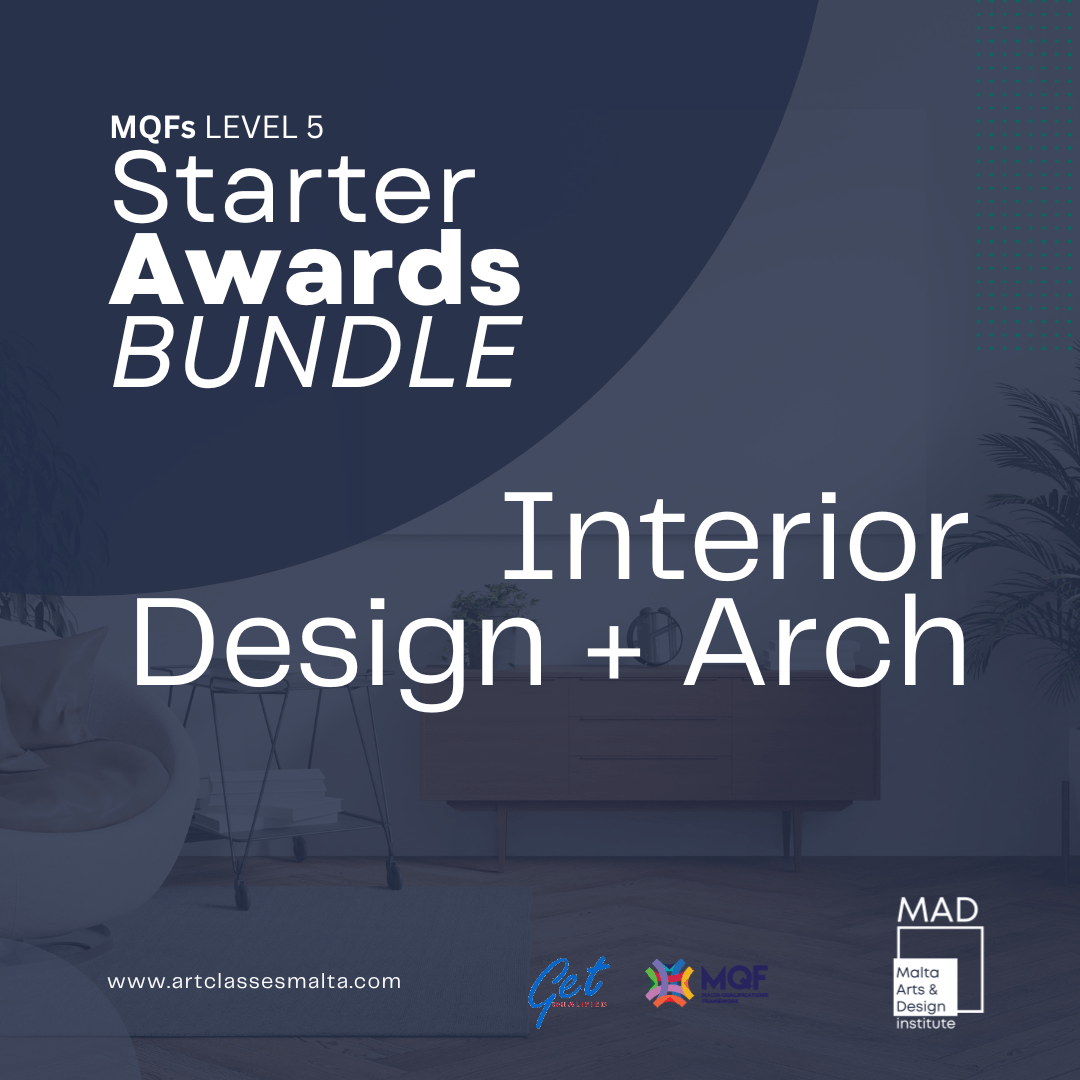
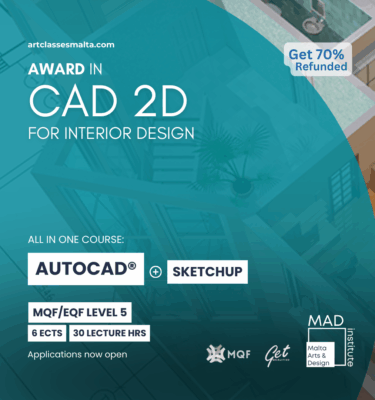
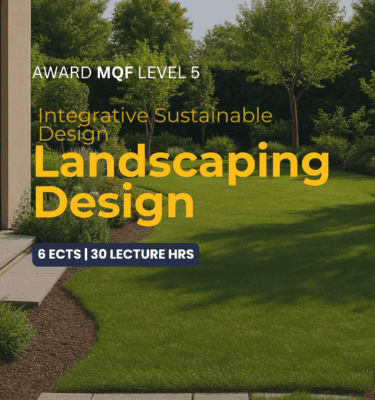
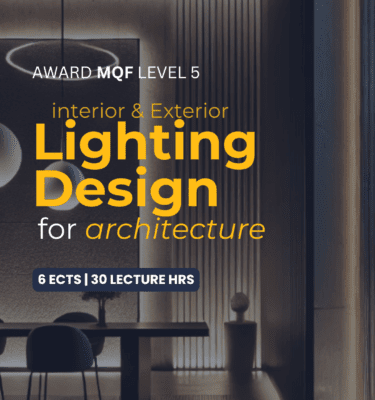
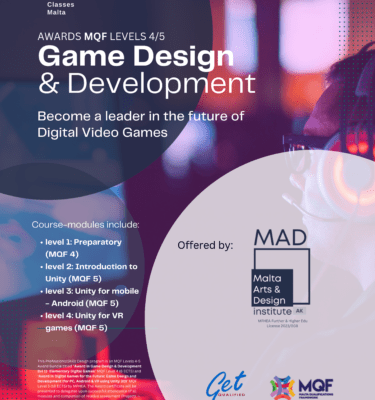
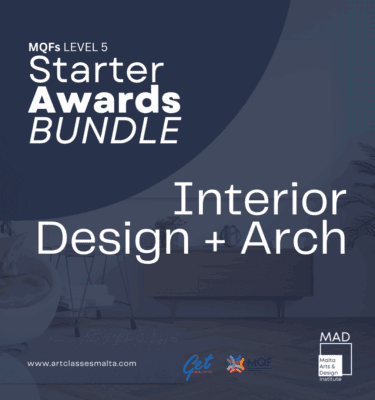
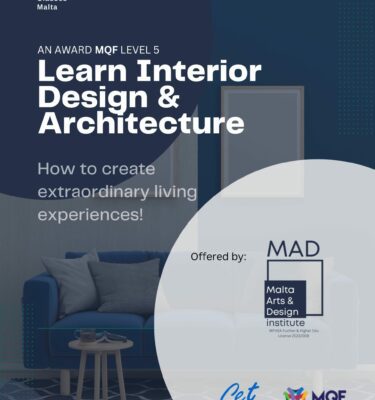
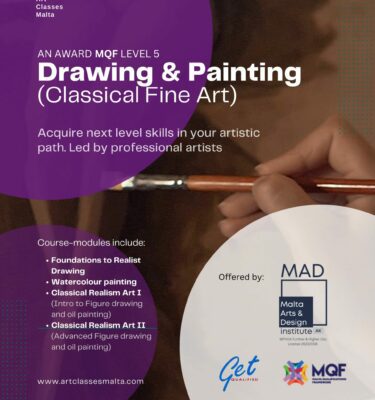
There are no reviews yet.